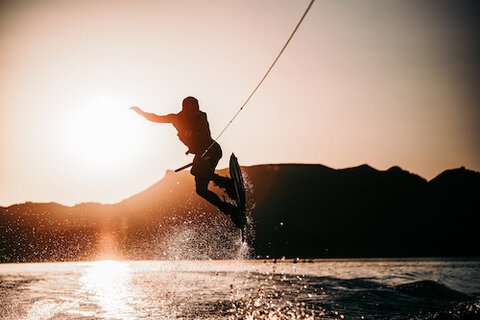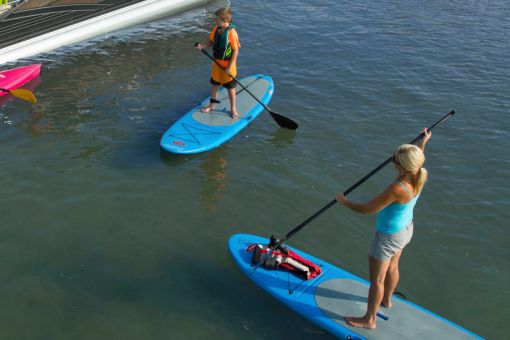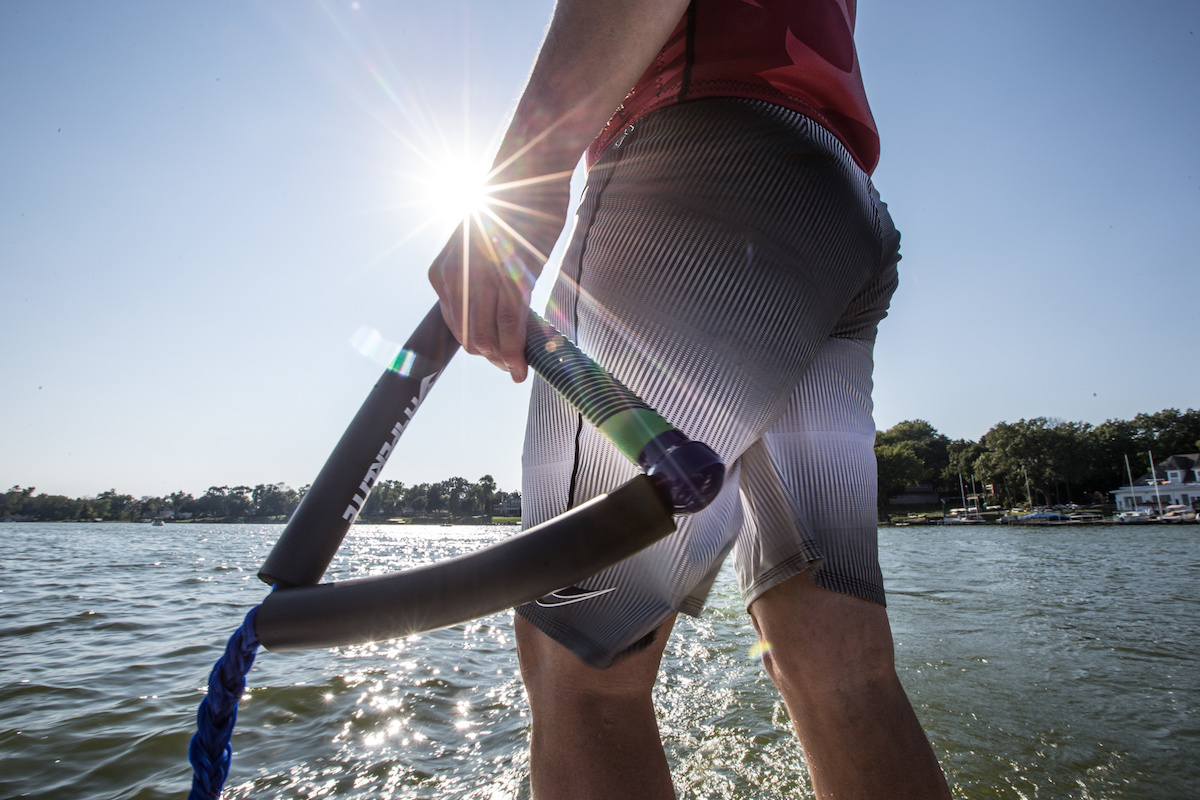Choosing the right wakeboard can be overwhelming if you're considering getting into wakeboarding or upgrading your current gear. There are many shapes, sizes, and features available. Knowing your options can help you make a better choice.
Whether you're choosing a beginner wakeboard or you're an experienced rider, picking the right one is essential. In this post, we'll guide you through 10 tips for choosing a wakeboard, helping you select one that suits your skill level and budget.
How to Buy a Wakeboard: Select the Right Board for You
1. Consider Your Skill Level
When choosing a wakeboard, your skill level is one of the first factors to consider. Are you a beginner, intermediate, or advanced rider? Your experience level will determine the type of wakeboard best suited for you.
- Beginner Wakeboard: If you're new to wakeboarding, it's essential to choose a board that offers stability, ease of control, and forgiveness. Beginner wakeboards typically have a more substantial rocker (the board curve), making it easier to maintain balance and make smoother turns. These boards help you learn proper techniques without being too difficult to control.
- Intermediate Wakeboard: Intermediate riders may want a wakeboard that balances stability and performance. These boards are generally stiffer with a moderate rocker to allow for more control while providing good pop off the wake.
- Advanced Wakeboard: Experienced riders often opt for wakeboards designed for higher performance. These boards are typically lighter and stiffer, offering a quicker response time and more aggressive turns. They're made for riders who can perform tricks, jumps, and spins.
2. Think About Your Riding Style
Wakeboarding is a versatile sport with different riding styles, including boat wakeboarding, cable wakeboarding, and even wakeskating. The type of wakeboarding you do will greatly impact your choice of board.
- Boat Wakeboarding: This is the most common form of wakeboarding, where you're towed behind a boat. Directional wakeboards with a pronounced rocker and fins are typically the best option for boat wakeboarding. They allow you to carve through the water, maintain speed, and easily handle large wakes.
- Cable Wakeboarding: Cable parks are becoming increasingly popular. Cable wakeboards are designed to handle features like rails and ramps. These boards are generally more durable and have a more aggressive shape to help you maintain control of the cable.
3. Select the Right Wakeboard Size
One of the most crucial factors when choosing a wakeboard is size. A wakeboard that's too small or too large for your weight and height can hinder your performance. As a rule, the bigger the board, the more stable it will be. Smaller boards tend to be quicker but require more skill to control.
4. Choose Between Flex and Stiffness
The flexibility or stiffness of a wakeboard plays a significant role in how the board performs on the water. Consider a few things when deciding how much flex you want.
- Stiffer Wakeboards: A stiffer board provides more control, stability, and speed, making it a good choice for advanced riders or those seeking aggressive performance. These boards typically provide better pop off the wake and are great for making more powerful, high-speed turns.
- Flexier Wakeboards: A more flexible wakeboard is better for beginner riders or those looking for a softer feel on the water. These boards absorb impacts better, making them forgiving if you're still learning. Flexier boards are also ideal for jibbing (riding on rails and obstacles), offering a better feel when hitting features.
Consider your riding style and skill level when deciding between flex and stiffness. If you're just getting started or love features like rails, a softer board may be better. However, you might prefer a stiffer board if you're all about high-speed turns and tricks.
5. Pick the Right Rocker Type
The rocker refers to the curvature of the wakeboard. There are three main rocker types: continuous, 3-stage, and hybrid.
- Continuous Rocker: This type provides a smooth, consistent ride, ideal for beginners, intermediates, or those who want a more predictable feel. It's great for softer landings and easier transitions.
- 3-Stage Rocker: A 3-stage rocker provides a more aggressive ride with a significant "pop" off the wake. It's perfect for riders who want explosive airtime and higher jumps. Advanced riders looking for big tricks and aerial performance prefer this type of rocker.
- Hybrid Rocker: Hybrid rockers combine the best of both worlds, offering the smooth ride of a continuous rocker with the pop of a 3-stage rocker. These are great for intermediate riders who want versatility and a mix of performance and comfort.
6. Look at the Shape and Edges
The shape and edges of a wakeboard will influence how it rides and how easy it is to maneuver. Wakeboards come in two general shapes:
- Directional: These boards are designed for one direction and are great for boat wakeboarding. They are ideal for carving, going fast, and making smooth, stable turns.
- Twin: These boards are symmetrical, allowing you to ride in either direction. Twin shape boards are great for riders who enjoy freestyle tricks or plan to hit obstacles at a cable park.
In addition to the shape, edge design can impact the board's grip on the water. Some boards feature sharp edges for better control and responsiveness. Others have softer edges for a smoother ride, making them more forgiving for beginners.
7. Consider the Bindings
Remember the bindings when choosing a wakeboard; they are just as important as the board itself. Bindings play a crucial role in your comfort, support, and control while riding.
- Closed-toe Bindings: These provide a snug, supportive fit, offering better control and a quicker response time. Closed-toe bindings are generally preferred by advanced riders or those who want the most responsive feel.
- Open-toe Bindings: Open-toe bindings are more comfortable and versatile, making them a popular choice for beginner wakeboarders or those who want to share their board with others. They offer more flexibility but may not provide the same level of responsiveness as closed-toe bindings.
8. Determine Your Budget
Wakeboards come in a wide range of price points. Generally, higher-end wakeboards offer better materials, technology, and durability, but they come at a higher cost. Setting a budget before you start shopping is essential to avoid overspending.
For beginner wakeboards, you can often find good quality boards at an affordable price without compromising performance. However, as you move into more advanced boards, prices tend to rise due to features like high-quality materials, intricate designs, and performance-enhancing technologies.
9. Try Before You Buy
Try to test out different boards before committing to a purchase. Many wakeboarding shops offer demo days or allow you to rent boards, which helps you get a feel for the various types of boards available.
Testing out different wakeboard types will help you decide how the board rides, how comfortable it feels, and if it suits your riding style. Don't be afraid to ask experienced wakeboarders or staff members at your local shop for advice on which boards might be the best fit.
10. Research Reviews and Ratings
Lastly, take the time to read reviews and ratings from other wakeboarders. This feedback can give you insight into the pros and cons of different boards. User reviews will provide real-world experiences from people who have ridden the boards, giving you valuable information about their performance, durability, and comfort.
Ready to Get Your New Board?
Choosing a wakeboard involves considering several factors, including your skill level, preferred type of riding, board size, and budget.
By following these 10 tips for choosing a wakeboard, you'll find the perfect board that enhances your wakeboarding experience. Remember to do your research, try before you buy, and always consider comfort and fit when selecting your gear. Happy riding!


